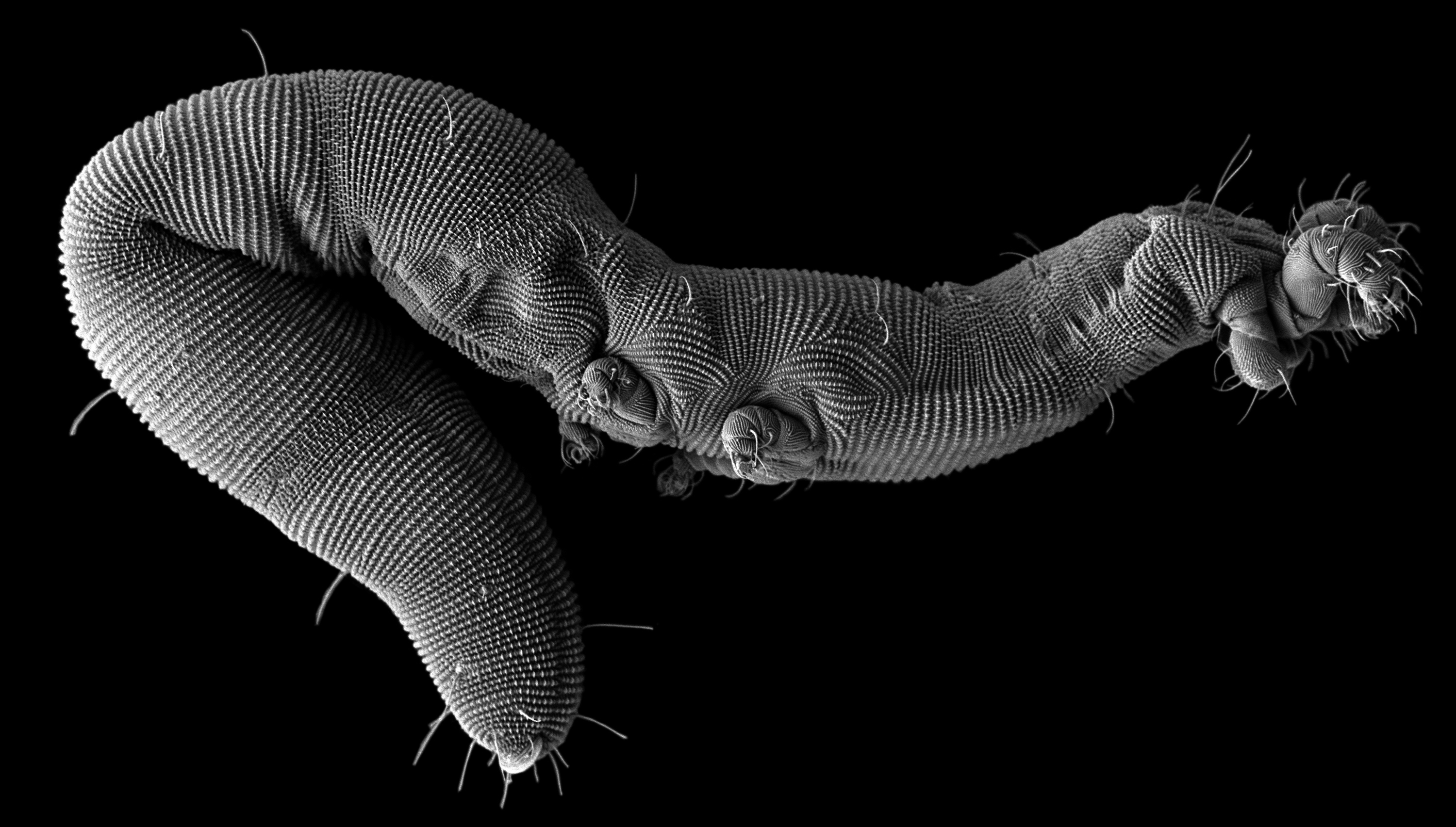Behold the Buckeye Dragon Mite
A newly discovered mite from Ohio is reminiscent of the caterpillar-like dragons of Chinese New Year fame.

A scanning electron micrograph of Osperalycus tenerphagus, the latest addition to a family of worm-like mites.
Unearthing a new species doesn’t necessarily require traveling to an exotic locale. For entomologist Samuel Bolton, a graduate student at The Ohio State University, a previously unknown mite was waiting to be found about two feet underground, just across the street from his lab.
Close relatives of spiders, mites are an important part of soil decomposition, Bolton says. Curious what tiny organisms were living in the area, Bolton dug a routine soil sample to investigate. When he first studied his new find under a light microscope, “it was obvious this was at least a new species, maybe a new genus,” he says. The first tipoff was that the hairs extending out from the abdomen lack branching and are much simpler than in other mites. The species is also lankier than most, resembling a worm more than an arachnid (although at 600 microns, it’s not easily visible without magnification). “They still use legs the way other mites do,” says Bolton, “but now they also have this very long body they can contract and extend like worms.”
To get an even closer look, Bolton needed to use a low-temperature scanning electron microscope, which freezes specimens so they don’t shrivel during imaging. The USDA’s Agricultural Research Service in Maryland has such an instrument, so Bolton loaded the backseat of his car with several five-gallon buckets of soil and set off East. At his destination, Bolton spent several days culling through the dirt to find at least 20 of the peculiar mites, which he and his USDA colleagues imaged at varying stages of development.
That’s when Bolton saw the feature that really distinguishes the mite from its brethren: a tiny pouch in front of its mouth that he suspects allows it to feed. “It seems ideally suited to be able to pick something up and put it into the vessel, burst it, and then suck in the fluid contents,” says Bolton.
While such feeding behavior may sound violent, it’s also impressive that the Buckeye dragon mite, as it’s colloquially called, can maneuver its food—likely either a bacterium or single yeast cell, based on the pouch’s small size—without rupturing the meal before digging in, says Bolton.
Inspired by the unique mouthpart, Bolton named the mite’s genus Osperalycus, which combines the Latin words for “mouth” and “purse” and the species name tenerphagus, for “tender feeding,” and published his findings in a recent edition of The Journal of Natural History. The new mite joins four others in the Nematalycidae family, which are called “dragon mites” for their worm-like shapes.
The Buckeye dragon mite’s feeding strategy, if unusual to us, makes sense evolutionarily, says Bolton. About 400 million years ago, when scientists think mites first appeared, their terrestrial home was harsh and arid, with primitive plants and mosses and few food sources other than bacteria. “Of course these [mites] would develop modifications to take advantage of the microbiota that are a fairly reliable resource,” he says.
Those adaptations seem to have come in handy for Buckeye dragon mites. They live in soil that’s rich in minerals but not organic material and is arguably a kind of extreme environment. Such conditions keep predatory mites at bay, Bolton suggests, leaving the critters to slurp up round after round of bacterial smoothies and yeast shakes.
Jessica McDonald is a health reporter for WHYY, Philadelphia’s public radio station. She is also a former Science Friday web intern.